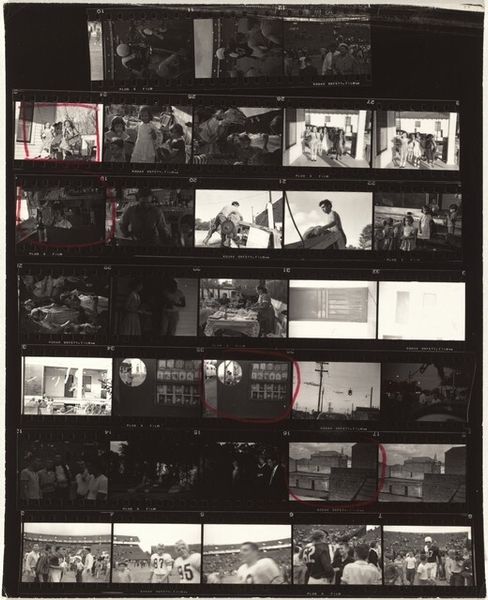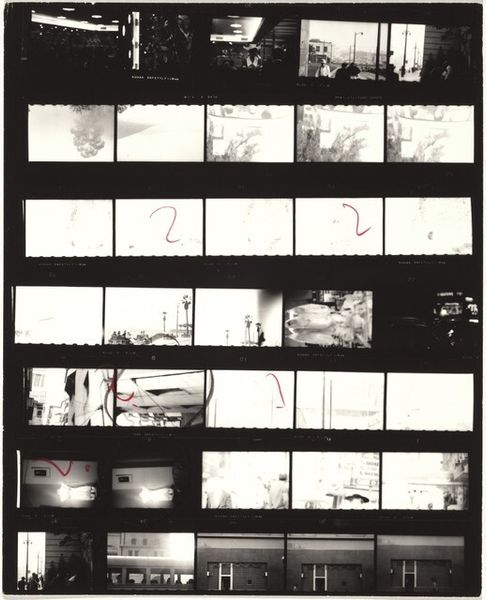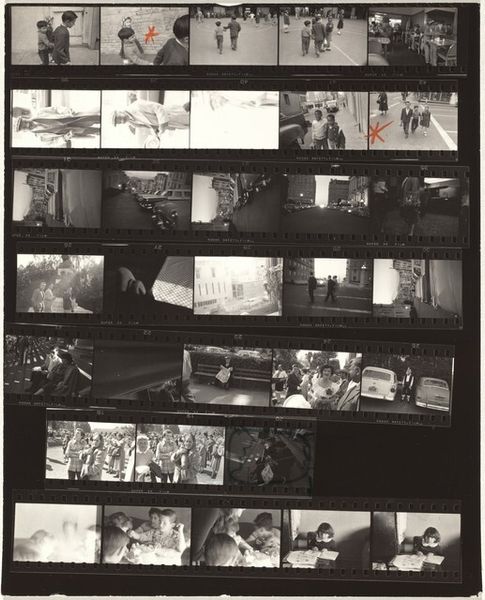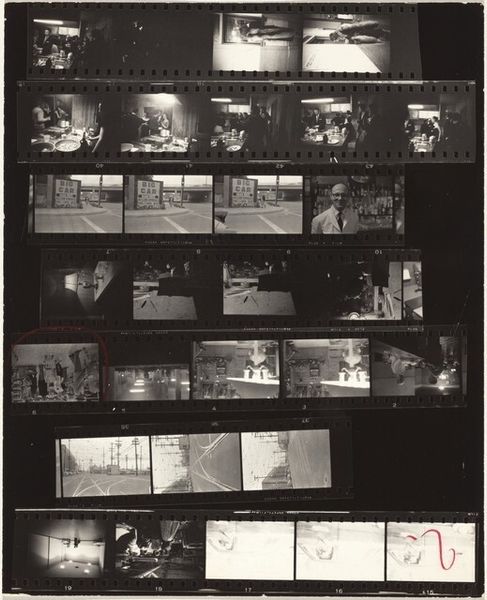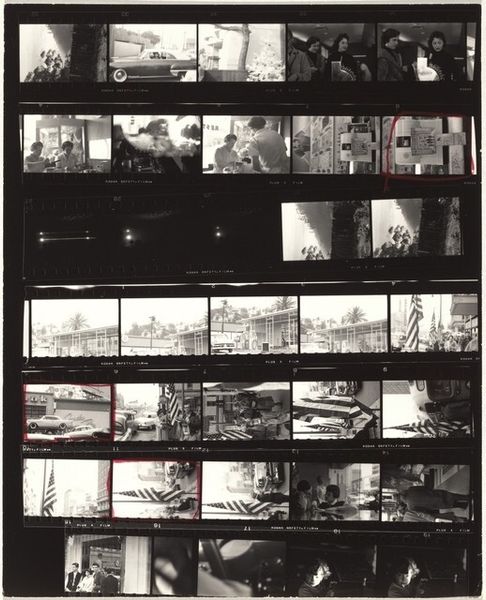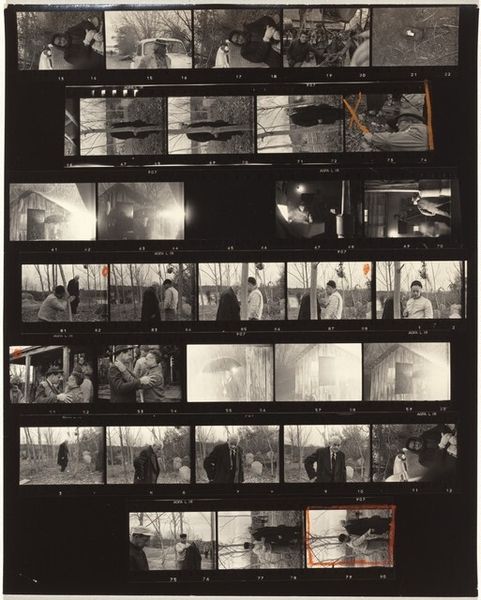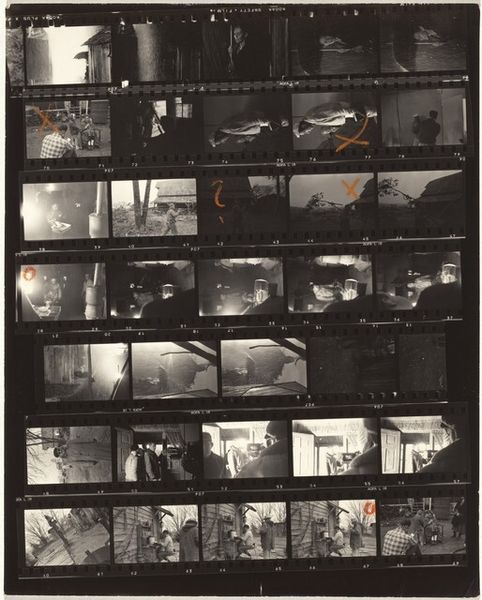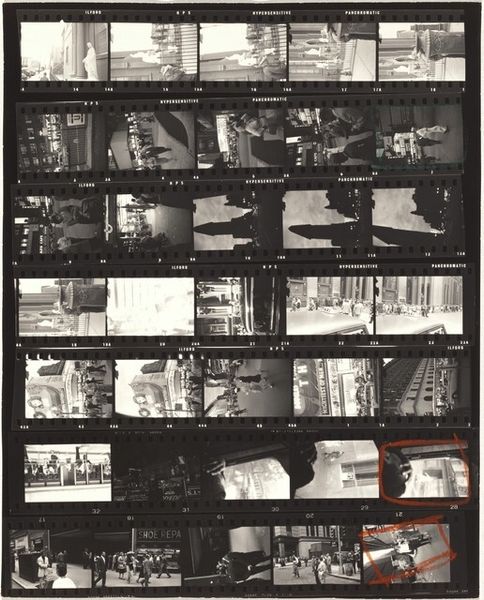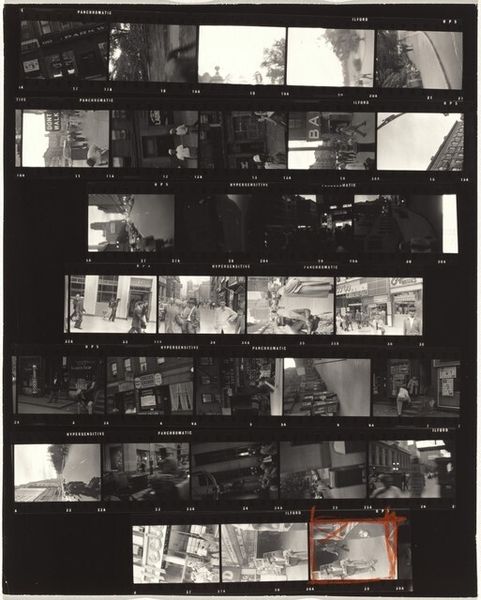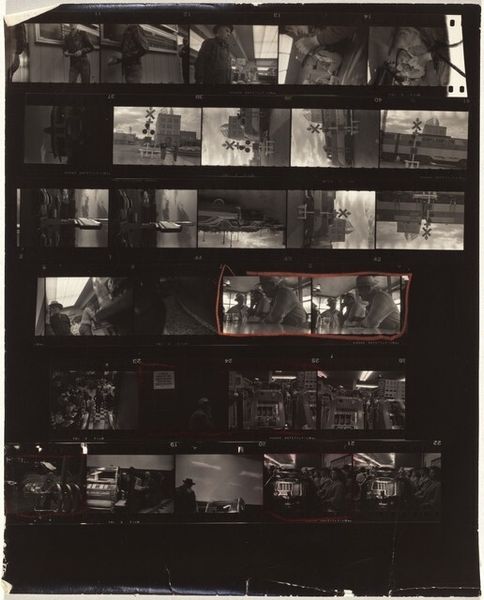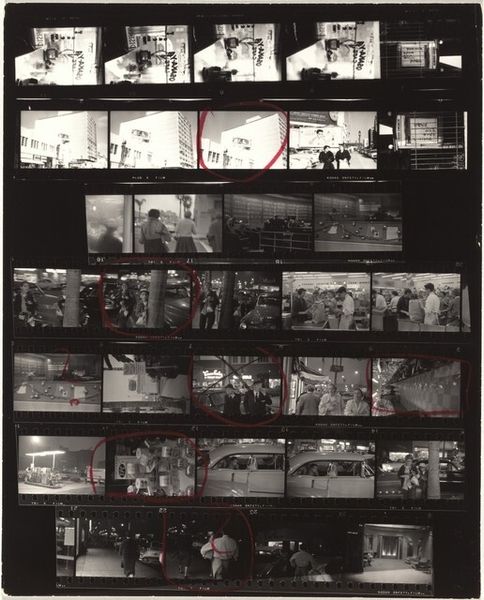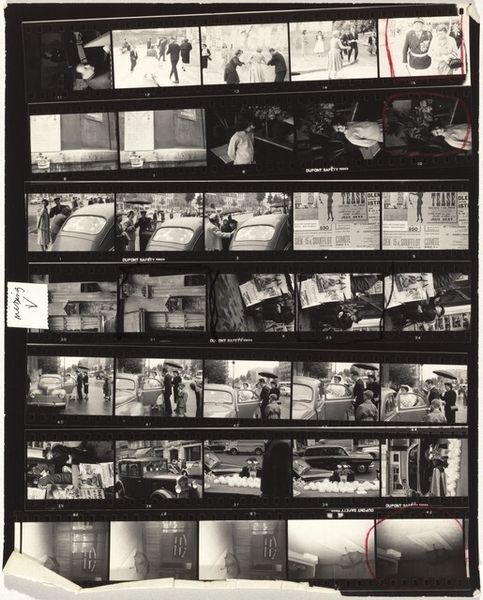
Guggenheim 434/Americans 39--Venice West, California 1955 - 1956
0:00
0:00
photography
#
film photography
#
street-photography
#
photography
#
pop-art
#
film
#
realism
Dimensions: overall: 25.4 x 20.5 cm (10 x 8 1/16 in.)
Copyright: National Gallery of Art: CC0 1.0
Curator: Looking at Robert Frank's contact sheet, "Guggenheim 434/Americans 39--Venice West, California" made between 1955 and 1956, what strikes you? Editor: The stark contrast is what immediately catches my eye, it’s a powerful use of light and shadow. It evokes a gritty feeling, almost unsettling, really diving into themes that intersect American ideals with a somber tone. Curator: It is, isn't it? Frank, famously a Swiss immigrant, received a Guggenheim Fellowship to photograph America, and these images, presented as a contact sheet, show a glimpse into his process of capturing what he found. I’m drawn to how this contact sheet gives a glimpse behind the scenes. What do you make of its form as a set of film strips and what the arrangement means for understanding his process? Editor: The choice to showcase this series in its original film strip format invites us to engage directly with Frank’s decision-making process. The arrangement compels a broader conversation on power, identity, and who gets to narrate American stories. Also, the contact sheet reveals the raw, almost uncut truth of that era, defying the polished, mainstream narratives pushed forward. Curator: Indeed. By displaying these images as a whole, Frank disrupts traditional presentation and challenges us to consider the social narratives suggested by his frames. How do you see his commentary playing out within each photograph here? Editor: He seems interested in juxtaposing glamour and stark reality, like the tension we get between the crowded scenes, which maybe offer glimpses of exuberance or freedom and what might be evidence of othering—the loneliness and separation of individuals existing adjacent to that. It brings a critical eye to how those celebrated narratives of American freedom often gloss over the disparities experienced across different social groups. It makes you ask: Freedom for whom, and at what cost? Curator: It also appears that even through candid street photography, the influence of Pop Art is showing itself, in an unexpected yet revealing moment. Do you feel that such movements had an effect on documentarians such as Robert Frank at this time? Editor: Absolutely. His raw aesthetic mirrors Pop Art's interest in the everyday, democratizing the artistic scope by bringing real, unglamorized moments to light. In that respect, this photograph's commentary is especially crucial to dissect, since it unveils truths easily ignored. Frank challenges us to consider America’s social intricacies beyond mere aesthetics. Curator: Thanks. Exploring this work helps one reconsider photographic art's function. Editor: It reminds us art wields the potential to question, provoke, and advocate, acting as a conduit for discussions on identity, power, and resistance.
Comments
No comments
Be the first to comment and join the conversation on the ultimate creative platform.
